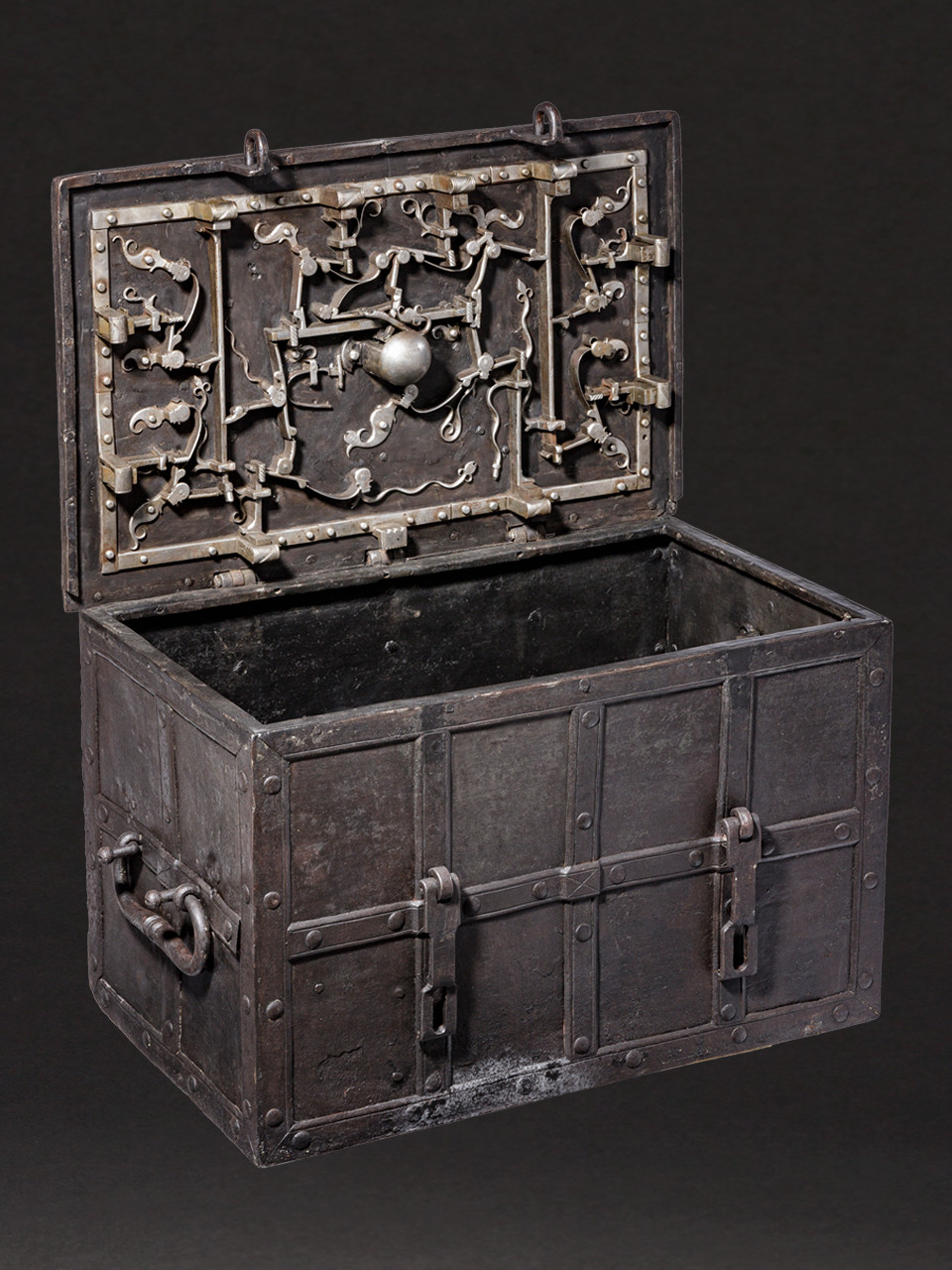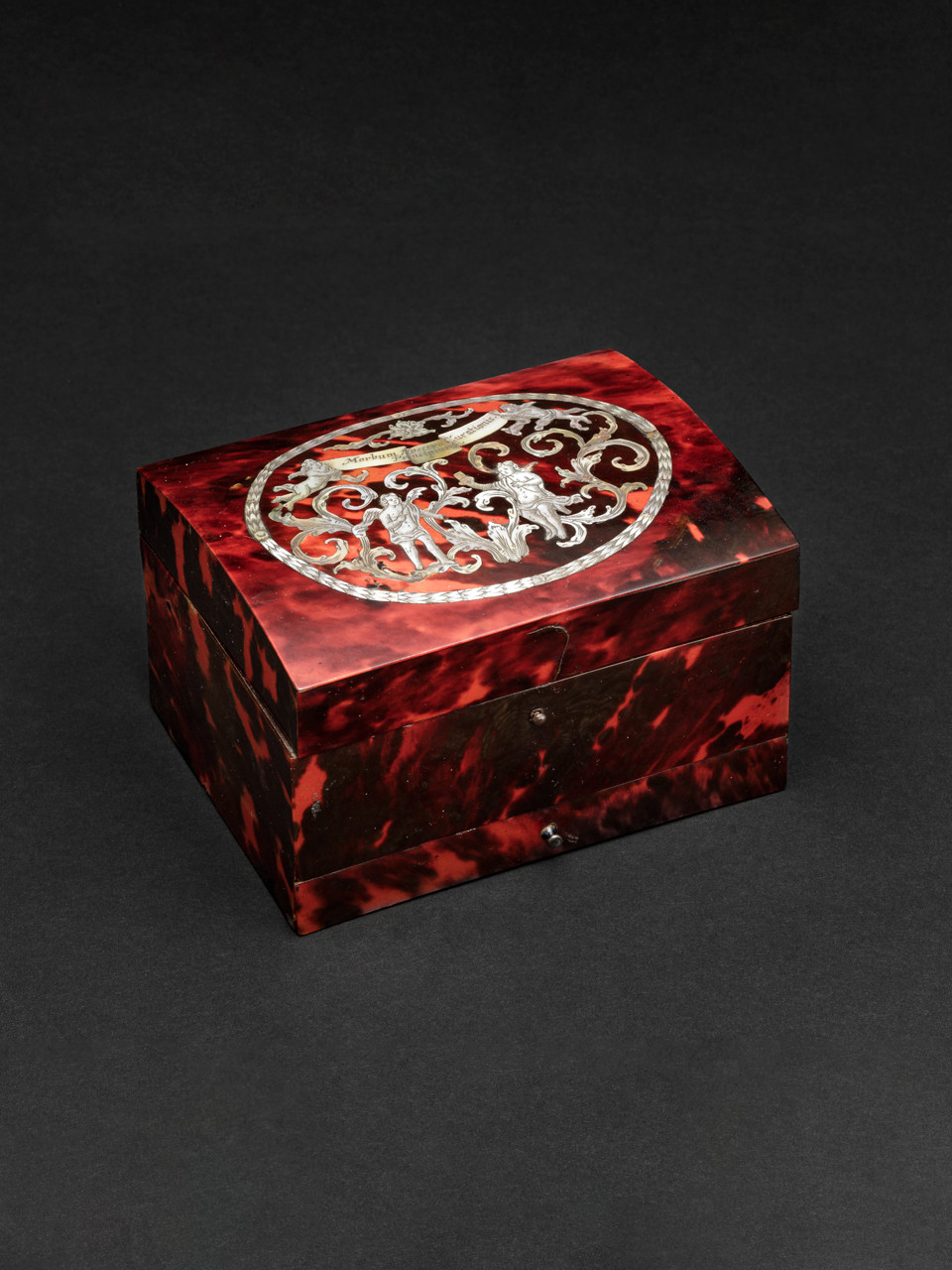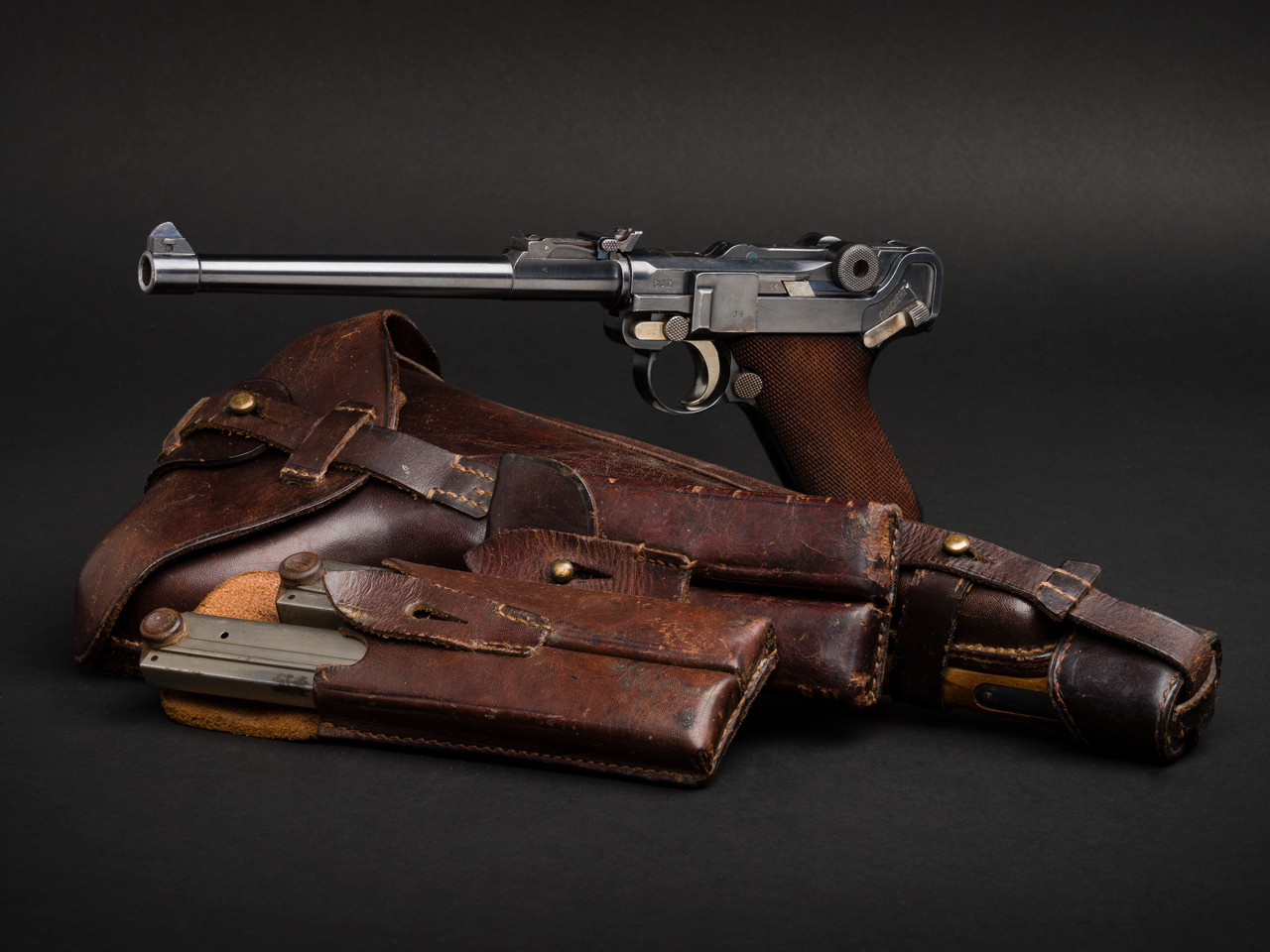MUNICH, OCTOBER 2021
The multifaceted November Auction of Hermann Historica in Munich.
Once again, Hermann Historica boasts a diverse line-up of consignments in its large Autumn Auction, taking place from 22 to 26 November 2021 in its salesrooms in Grasbrunn near Munich.
As summer draws to a close, autumn starts painting the leaves in splendid, vivid hues. In an imitation of nature, Hermann Historica auction house is also showing its colours, allowing the world of art to flourish in its many facets. This is reflected clearly in the forthcoming Autumn Auction of the historical auction house.
Works of Art, Asiatica, Antiquities
The highly anticipated, one-week sale opens on Monday, 22 November. Over 900 lots are coming under the hammer, including scores of rare objects and countless magnificent highlights ranging from masterpieces of craftsmanship to Asian art and antique showpieces. Kicking off as lot number 7 is "The Prince of Orange as Amor", an oil painting on oak. Painted and signed by Nicolas Maes (1634-93), a student in the master class of the great Rembrandt, it is being offered for sale from 2,800 euros.
You could be forgiven for thinking that treasure chests are ten a penny. However, the late Gothic armada chest behind lot number 250 is particularly intriguing as it dates back to 1510/20 and is fitted with an ingeniously sophisticated locking system. Bids from 6,500 euros are now invited for this strongbox.
What might appear bizarre – perhaps even offend our modern sensibilities – was common practice during the baroque era. Physicians used to believe that they could diagnose diseases by tasting the patient's urine. This very scene is depicted with consummate skill on lot number 348, a finely worked French coffret veneered in tortoiseshell. Made circa 1700, with first-class materials and a well-designed construction, the casket is expected to fetch 4,500 euros.
Among the works of Asian art, a majestic bowl of equally impressive size is an uncontested pièce de résistance. Dating from the reign of Emperor Qianlong (1735-96), one of the most distinguished rulers of the Qing dynasty, the polychrome bowl is embellished with auspicious symbols. At the centre is the shòu character, representing longevity, surrounded by bats, which stand for good luck and blessings. Lot number 607 is listed at 20,000 euros.
At first glance, it might seem plain, almost unremarkable; however, on closer inspection, this little cup turns out to be a thoroughly unusual beauty. This Taoist ceremonial receptacle, lot number 623, bears the inscription "Jinlu Dajiao Tan Yong" (= To be used on the large gold sacrificial altar) on the underside and served none other than the Emperor Jiajing (1522-1566) of China during important sacrificial ceremonies. This rare altar cup or tanzhan is estimated at 7,500 euros.
Next, lot 703 is a beautiful, superlatively wrought receptacle of a very different type, namely a fabulous container for storing brushes. Carved in one sturdy piece from an elephant's tusk and exquisitely decorated with numerous layers of fine gold lacquer, it once delighted the calligrapher's eye and will now quicken the pulse of every art connoisseur. Bids from 2,800 euros are now welcome for this Japanese receptacle from the Meji period.
An early Christian vase from the 5th to 6th century is sure to be the focus of attention in the antiquities section. Between the gilt ornaments, the vase is decorated with a row of alternating medallions featuring symbols of Christian faith, including the Chi-Rho monogram, the Lamb of God and several peacocks. Opening at 350,000 euros, the silver vase (lot number 731) is complete and in immaculate condition.
Equally rare and no less spectacular, lot number 771 is a stunning example of archaic sculpture. The minimum bid of 100,000 euros will secure this fragment of a stele, featuring the head of a youth wielding a spear. Carved over 2500 years ago, it has been consigned from an old Munich collection.
Thanks to its excellent preservation, lot 799 would also grace any museum collection. Every last construction detail can still be seen on this Roman ring pommel sword, which was forged in the 3rd century. This rare weapon can now be acquired for 12,000 euros.
Antique Arms and Armour from all over the world
On Tuesday, 23 November, just under 300 lots from "Antique arms and armour from all over the world" are being offered for sale. Here again, collectors may look forward to a parade of sensational objects. With a catalogue price of 40,000 euros, lot number 1029 is a marvellous Perso-Indian shamshir of the utmost rarity. The signed Damascus blade was forged by no less than Asadullaj Isfahani, one of the most skilful swordsmiths of the Orient, while its sumptuous hilt was made by master craftsmen in India. As the cherry on the cake, this 18th century sabre is dedicated to Nadir Shah Afshar, often referred to as the "Napoleon of Persia". The back of the blade is embellished with gold-inlaid inscriptions and the gilt silver hilt sparkles with diamonds and rubies; furthermore, the wild cats on the crosspiece and pommel lend the shamshir a warlike appearance
Although perhaps less opulent, lot 1209 is equally breathtaking. A certain finesse and workmanship were required to join the blade to the hilt. The quillons is elaborately chiselled, while the horn and bone hilt boasts four fine, patterned inlays on both sides. "Langes Messer" or one-handed swords in this superb, courtly quality are otherwise only found in museum collections. Dating from 1530/40, this rare South German nonpareil is sure to coax an enthusiast into investing 12,000 euros.
From the same epoch, and just as worthy of note, comes a heavy North Italian helmet of Savoyard type, here listed as lot number 1132. It comes as no surprise that this piece of armour is also known as a death's head helmet. The round eye openings would have made attackers look absolutely terrifying and mysterious on the battlefield, at the same time protecting them from muskets. Dating from around 1600 and set to rake in 10,000 euros, this helmet will also delight buyers with its engraved visor.
Fine Antique and Modern Firearms
The procession of fascinating pieces continues on Wednesday, 24 November. "Fine Antique and Modern Firearms" comprises almost 900 lots that will cause a stir, not just among gun collectors. A rifle is not just designed for shooting but also aims to show off its technical refinements with lavishly engraved ornamentation and an exceptional finish. As the epitome of perfection, these features may be attributed to the master of the animal-head scroll. Hermann Historica is now offering three of his illustrious works for sale. Beginning with lot number 2054, the first of the trio is a deluxe hunting wheellock rifle with the Austrian master craftsman's typical, lavish carvings: indigenous and exotic wild animals hide among the leafy vines, accompanied by mythical creatures. Lot 2069 represents a pair of his deluxe wheellock pistols. These too are adorned with profusely carved floral décor, along with lion's heads, grotesque masks and silver-inlaid lock plates. Today, most of his rifles can be found in major international collections, such as the exhibits of the Metropolitan Museum in New York. His works are therefore rarely available on the market.
Lot 2054 has a reserve of 35,000 euros, while lot 2069 is valued at 20,000 euros. Moreover, with its equally ostentatious furniture in gilt brass and its finely chiselled and engraved floral decoration, lot 2105 will not disappoint. The distinguished flintlock pistol made by the Austrian gunsmith Joseph Kullnig of Ferlach has a starting price of 12,000 euros. By contrast, lot 2200 has no need of any ornaments. Dating from the Thirty Years' War, with its twelve powder flasks and the shot pouch still in place, the musketeer's bandolier is a triumph in its own right. Its fantastic condition is also reflected in the reserve of 3,500 euros.
Meanwhile, presenting a number of rare weapons, the modern firearms chapter is determined not to be outdone in this auction. It was probably the world's first truly functional self-loading pistol – the Borchardt C93. One of the series of just 3,100 pistols made by DWM is now coming under the hammer in lot number 2331. The asking price of 15,000 euros includes the original wooden case and a selection of accessories. Although the production of the Borchardt C 93 was discontinued at an early stage, it was regarded as an important precursor of the celebrated P08, the reconstruction designed by Georg Luger. One model – the sought-after "long pistol 08" – is a very rare find these days, especially in mint condition. Buyers will therefore be interested in lot number 2788, which is listed at 2,500 euros, including the bag, stock and four matching numbered magazines. Meticulously hand-crafted in extremely small quantities, lot 2339 is another remarkably rare discovery. With a limit of 5,000 euros, this Korth semi-automatic pistol is a dream come true for any sports marksman and collector.
Orders an Military Collectibles until 1918
The supremely diverse catalogue of "Orders and Military Collectibles until 1918" showcases some amazingly rare pieces and fascinating collections. The more than 500 lots are being sold on Thursday, 25 November. Buyers can expect the usual wide range of international insignia. Given its exceptionally uncommon grade, a Cross 1st class with Oak Leaves of the Finnish Order of the Cross of Liberty is bound to be one of the biggest draws. Not even awarded 100 times, this decoration – lot number 3005 – will soon be changing hands for 1,000 euros. Lot 3015, an Order of St. Stanislaus from Russia, circa 1910, deserves a special mention. Bids from 4,000 euros are now invited for this highly decorative, matching 1st class orders set made by court jeweller Eduard, complete with the original watered, ribbed silk ribbon and the original, gold-embossed presentation case. Meanwhile, an early Military Pilot's Badge of Juncker type from the German Empire (lot number 3053) is also worthy of note. Together with the rare presentation case, it will take pride of place in a new collection for 1,000 euros.
Empress Elisabeth of Austria, beloved all over the world, had a penchant for a different type of decoration, namely precious jewels and the finest gowns. So, once again, Sisi fans will be rejoicing at the objects in this auction. In addition to an elegant summer dress in white silk (lot 3129, guide price 10,000 euros), lot number 3136, a pair of exquisite, dainty slippers set with rhinestones in a heart shape, is expected to fetch 2,500 euros. All the same, the Empress' sudden demise is something that her devotees would prefer to forget. The intriguing artefact in lot 3138 is having none of it: the right-hand black silk glove worn by the Empress on the day of her brutal assassination in 1898 is coming under the hammer for 12,000 euros. Truly of the greatest historical significance, it would be the absolute highlight in any collection relating to Empress Elisabeth.
Black is a far cry from the strikingly colourful uniforms worn by the military bandsmen. The auction house is now delighted to announce an especially fine set, the highly unusual uniform for a drummer in the Imperial Russian Army circa 1906, under lot number 3178. The gold trim, red cuffs and piping are a particularly effective contrast to the dark cloth. Discerning uniform aficionados are sure to snap it up for the asking price of 6,000 euros.
The announcement of lot number 3470 will make collectors of spiked helmets prick up their ears. Embellished with a lavishly gilt, partially enamelled medallion with the Saxon coat of arms, the rare helmet for officers in the General Staff of the Royal Saxon Army is an exceptional piece. The minimum bid of 6,800 euros will secure this late model, issued at the outbreak of World War I.
Why not browse through the Hermann Historica auction catalogues? They include detailed descriptions of all lots, along with numerous high-quality photographs.
Subject to the current COVID-19 regulations, the pre-sale viewing will take place from Monday, 15 November to Saturday, 20 November, from 11 a.m. to 5 p.m. each day, at the offices of Hermann Historica in Grasbrunn, near Munich.
Please note: all prices quoted are net prices and do not include the 25% premium (and VAT).
Press contact:
UTA BAUMANN
Communication and Press
Bretonischer Ring 3
85630 Grasbrunn / München
DEUTSCHLAND
Phone: +49 (0) 89 - 54 72 64 9 - 0
Fax: +49 (0) 89 - 54 72 64 9 - 999
Copy permitted – please send proof to:
Hermann Historica GmbH
Marketing Department
Bretonischer Ring 3
85630 Grasbrunn / Munich
DEUTSCHLAND
or by Email to:
press@hermann-historica.com
Further information and high-definition
photo material
Request to:
press@hermann-historica.com
All photos:
Copyright Hermann Historica GmbH 2021




























